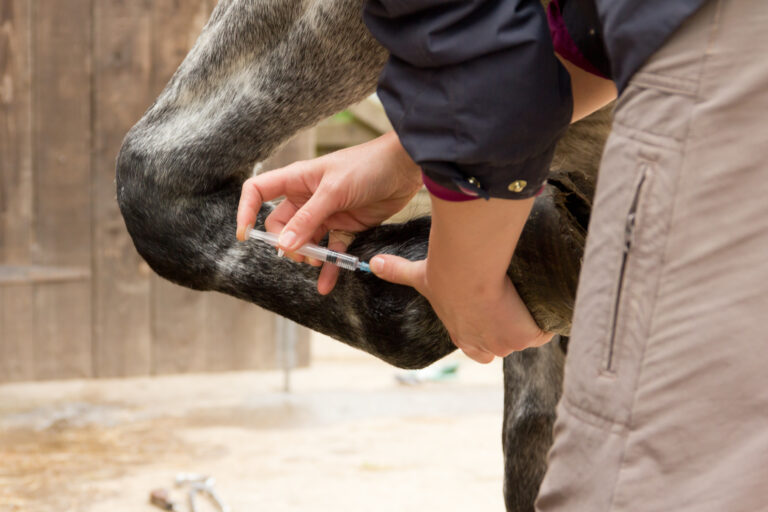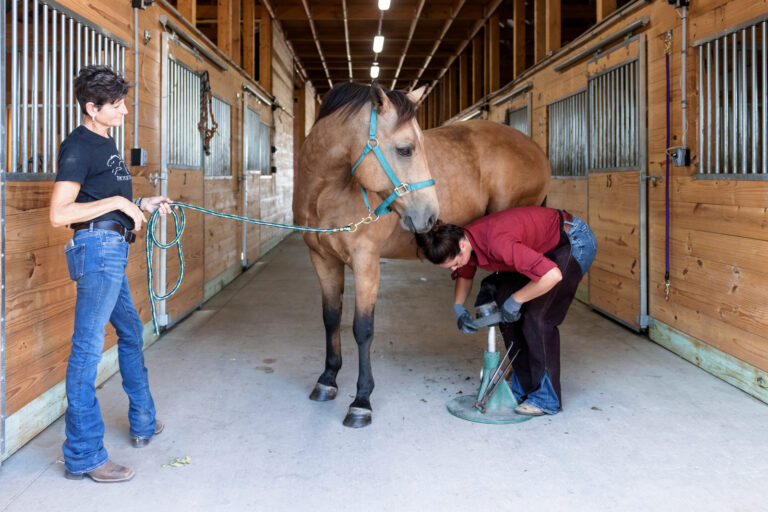
You are probably familiar with the following scenario: You just walked in the door after a long, grueling day of farm calls. You’re thinking about a nice, hot shower, some dinner and relaxation before starting in on the finish of your day with call backs, medical recordkeeping and restocking the truck. This calm, dream evening is shattered by the phone bringing you back to the realities of being available on call 24/7/365.
Do you ever feel like the minute you are embarking on a break from work or are about to walk out the door, the phone (or the pager—yes, some vets still have these) goes off, demanding your attention? The inevitable emergency often comes at the least-welcome moment—while at your kid’s baseball or soccer game, your daughter’s graduation, attending a friend’s wedding, while at dinner with family, at the movies, riding your horse, leaving for vacation … the list of inopportune moments is endless.
Many times, it is a call for an “emergency” that could have been attended to days ago or at least during regular business hours. The weekend is upon you, and now the client is concerned about waiting until Monday. Or the client puts his or her own work first knowing that you will respond to an after-hours call, which costs less than if he or she had missed work during regular business hours. Anyone in the practice of equine medicine is all too familiar with these scenarios.
True emergencies exist. Yet have you ever evaluated just how many of those after-hours calls to which you respond are true emergencies?
Over my first two decades of full-time practice, I counted up all the emergency calls to discover that only 10% of “emergency” calls were truly emergencies that just couldn’t wait until regular business hours. If this assessment is in the same league as what you experience, that means you spend a lot of windshield time and valuable evening and weekend time that could have been avoided.
Working in a multi-doctor clinic is a help as it splits emergency call time among practitioners, thereby easing the burden. But being a solo equine practitioner makes you “chief cook and bottle washer.” And round-the-clock service is a recipe for burnout.
Our most valuable commodity is our time, and it is not a renewable resource, as there is a finite amount of it in our lives. Today’s equine veterinary practice is a lifestyle, often precluding other personal pursuits and at the expense of family time. We spend so much of our professional lives looking after other peoples’ problems and animals that sometimes we forget to look after ourselves.
What can you do to devise a plan to give yourself relief from the 24/7/365 obligation to minister to your patients and clients? Read on!
Setting Limits Is Liberating
Veterinarians pride themselves on educating clients about the latest advancements in equine medicine and surgery. Why, then, is it so easy to overlook the need to educate clients about professional boundaries?
Our time and resources are tugged on from every direction—by clients needing attention, by our families deserving attention, by professional organizations requesting our attention, and by ourselves trying to live up to expectations of our personal performance.
One solution is to set limits and stick with them.
From a personal experience following a family death, after 20 years in practice, I announced to my clients that I would be relegating night and weekend calls to colleagues. I expected a lot of pushback and complaints. Instead, the most common comments I heard were “What took you so long?” and “It’s about time.”
The degree of understanding by my clients was staggering and totally unexpected. Rather than “abandoning ship,” most went along with my decision and remained loyal to my practice.
I wonder if we often don’t give our longstanding clients enough credit for recognizing the strain that we are under to accommodate their needs.
The hardest part of this strategy is the ability to say “No” when a client calls for your help outside of regular business hours. It is helpful to take it to heart that “No” is a complete sentence. Just as it takes practice to set limits, it takes practice as well as a bit of politics to say “No.”
One way to ease this proclamation is to provide alternatives to client requests and demands. Information handouts are helpful, as are specific phone numbers of emergency veterinary clinics. It helps to view the times when you say “no” as an interaction with an opportunity to educate clients. With time, it becomes easier to stick to the plan, especially once you get a taste of evening and/or weekend freedom.
It is important to send out notifications to your clients and include on your website just what your specific hours will be. You might want to do part-time emergencies in addition to routine daily care. You might want to limit your time to scheduled appointments only. Perhaps you prefer to open for business later on some days and carry your practice hours into the evenings on those days. There are many ways to tackle the timing of the days and hours that your practice is available. You might consider offering a survey to your clients to identify their most desirable times for appointments.
Regardless of how you decide to manage your time, your clients need advance notice so that they know what to do and who to call when faced with an equine emergency. Nothing is worse than finding out at the very moment of need that a favorite veterinarian is not available. When arrangements with other practitioners are set up in advance, resentment by all parties is minimized.
Collaboration with Other Practices
Collaborating with other practices is a strategy that requires effective communication, not only with your clients but also with the colleagues or university veterinary services to whom you plan to send the emergency calls. There must be cooperation between all parties and agreement by others to take on this emergency load. Sometimes there is a new practitioner in the area who is eager and willing to take as much work as can come his or her way.
It is nice if there is a consensual arrangement that once your client’s emergency is handled, the case is turned back over to you the next day. Clients appreciate the arrangement because they know their primary equine doctor is more rested and no longer as rushed at appointments. They know their horses receive conscientious first aid care for after-hours emergencies through the back-up veterinarian, and they know their primary doctor is available for any necessary follow-up care.
For a hungry and eager young vet, emergency work is not only interesting, but financially rewarding. It also gives the more experienced practitioner an opportunity to be a mentor. This can be a win-win for everyone. Not only is it a natural evolution, but it is also a smart decision to pass the torch to fresh, energetic younger veterinarians who are motivated to practice as much as they can.
Relief Veterinarians
In many areas, some equine practitioners actually prefer emergency and relief work, since it offers more financial advantages than daily practice life. Additionally, doing relief work enables a practitioner to work as much or as little as desired, thereby making work-life balance more attainable.
You might decide that rather than hiring a relief veterinarian, you’d rather serve as one and pursue that line of instead of managing the constancy of a full-service, full-time practice.
Educational Efforts
Horse owners are usually eager to learn just about anything about their horses’ health. Upon discovery that most “emergency” calls were, in fact, not critical, I put together a pair of two-hour Power- Point programs and presented them to the local equine community through the local horse owners’ association.
The association advertised, set up the venue, got a small fee from non-member attendance, and I enjoyed presenting a comprehensive slide show to visually describe what situations constitute true emergencies and what owners can do to manage something less serious until morning. I stressed that if there is any doubt about what is and what isn’t an emergency, they should call, text, email and/or send photos to ensure that they are making the right decision to wait. I assured them that phone calls (or electronic communication) were always welcome. This provides clients with a huge sense of relief that they aren’t just left adrift.
There is no doubt that such educational efforts in horse owner self-sufficiency cut down on fire-engine practice dynamics and the resultant emergency service income. Go through your receipts to see just how much income that amounts to. Then decide if rest and work-life balance are worth foregoing a portion of emergency service practice revenue.
My experience is that the revenue wasn’t missed, but the break from the physical and mental demands was extremely welcomed.
Job Sharing
For some, the rigors of equine practice with the long hours, physically exhausting work and lower revenue than small animal practice are just not measuring up to their dreams. In some cases, joining a group practice is a good solution to this problem.
Or you might consider teaming up with one or more solo equine practitioners to share emergency duties. This can be rewarding not just for time off, but also because of collaboration on difficult cases and sharing a love of equine practice.
Alternative Practice Pursuits
Through the intensity and depth of the veterinary educational experience, we are fortunate in how many doors of opportunity are available to do just about anything with this knowledge set. Other professional paths are there for consideration.
Some practitioners have found their calling not only as practitioners, but also as effective organizers, committee members, communicators, educators, writers, illustrators, researchers, politicians, entrepreneurs, administrators and business consultants—all serving with a focus on veterinary medicine.
Other pursuits in the equine veterinary medical field include working in research, taking jobs with pharmaceutical companies or industry, or teaching, to name a few.
Changing the Culture
It really does take a community effort to raise a group consciousness, and the onus of responsibility for improving the situation for all equine veterinarians falls on each practitioner’s shoulders.
If client demands are accommodated to service routine appointments in the evening or after hours, then it is not hard to see why clients would expect every veterinary “professional” to do the same, and to be disappointed when one does not. This doesn’t necessarily speak to professional dedication as much as it does to two other possible characteristics: 1) the inability to say no and 2) aspirations of increased financial compensation.
This leads to a trade-off, with quality of life being exchanged for work and money, at the expense of personal time and time with our family members. This does affect all equine veterinarians. Unfortunately, it appears that the veterinarian who sets boundaries “doesn’t care” or “isn’t dedicated to helping animals,” when, in fact, he or she might only be exhibiting self-preservation.
The Ultimate Goal
An older vet colleague once said to me, “I never miss a meal, but some of them come awfully close together!” How true this is for an equine practitioner who puts in long, nonstop hours ministering to patients and clients.
That said, there are alternatives to feeling boxed in with non-stop emergency work on top of long work days during regular business hours. Look at the many possible avenues you can take to put your work-life balance in order, then try a change to see if a new schedule or approach to practice is a good fit for you.
The desired goal is that time be allocated appropriately between business and your own life. Without the pervasive element of fatigue, it is easier to do a better job of practicing veterinary medicine without burning out the passion.




